

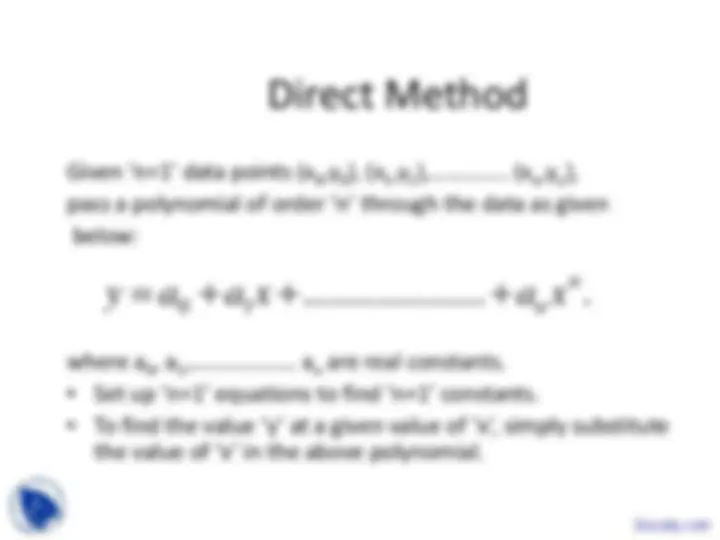
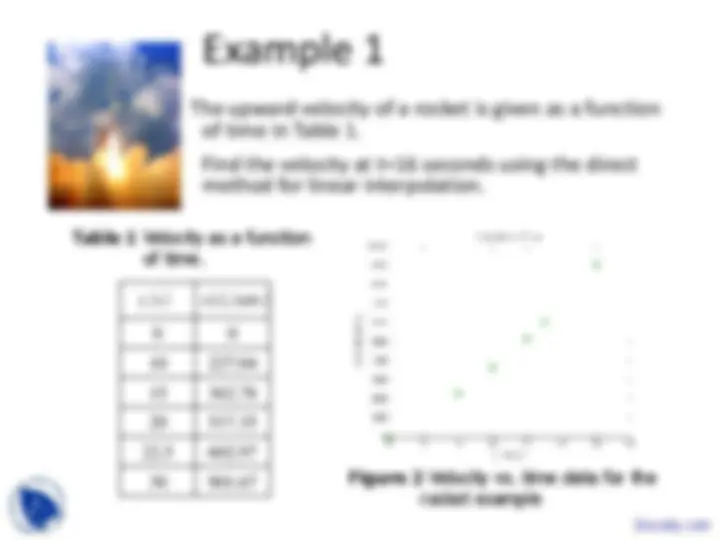
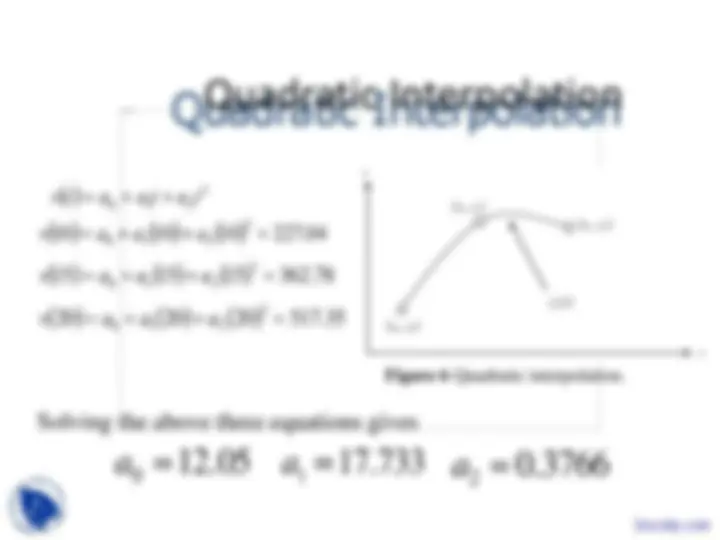
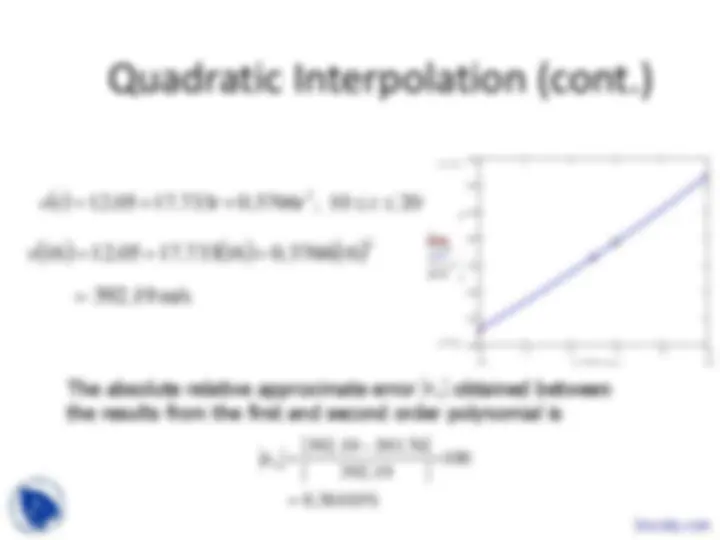
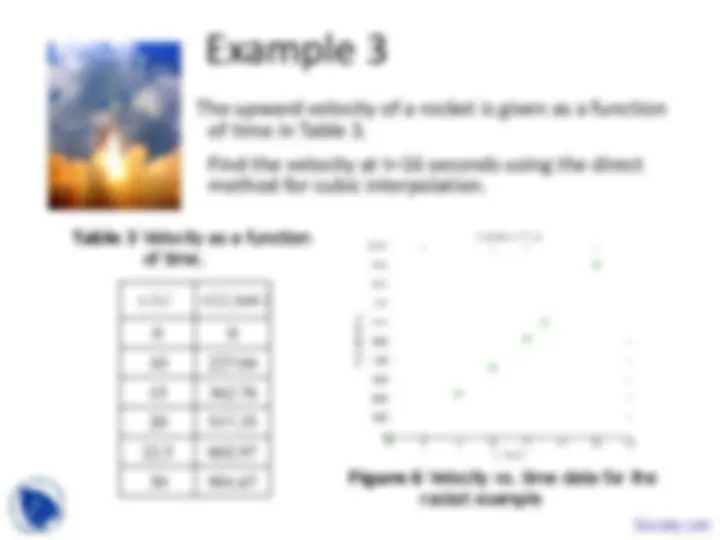
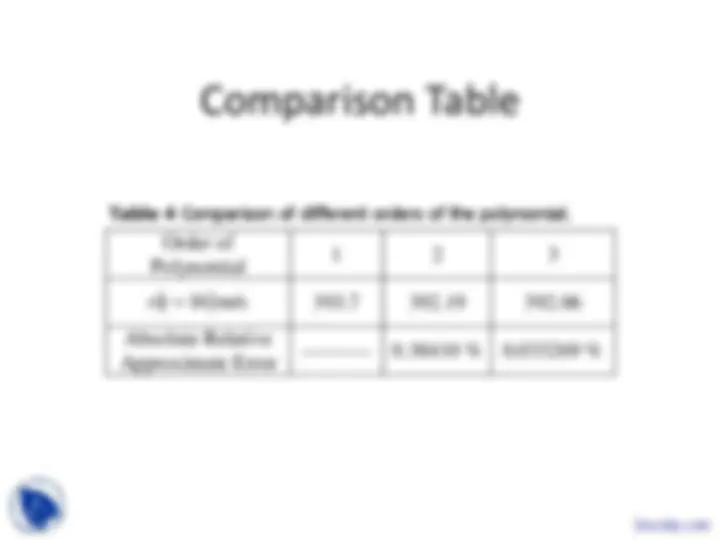
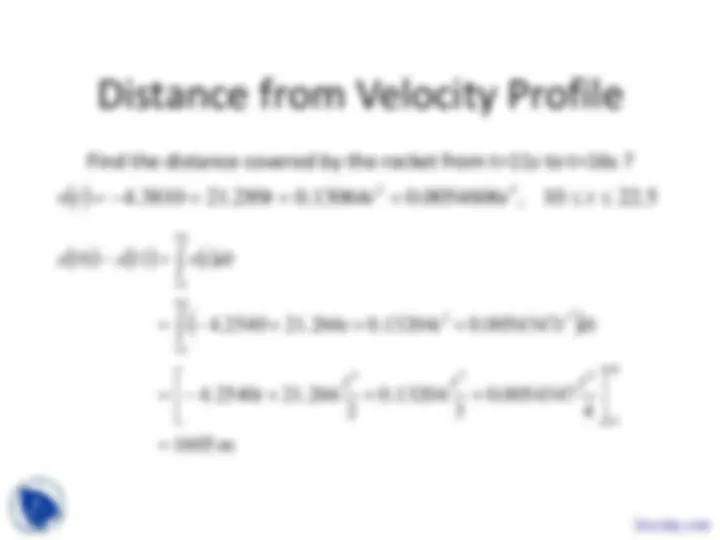
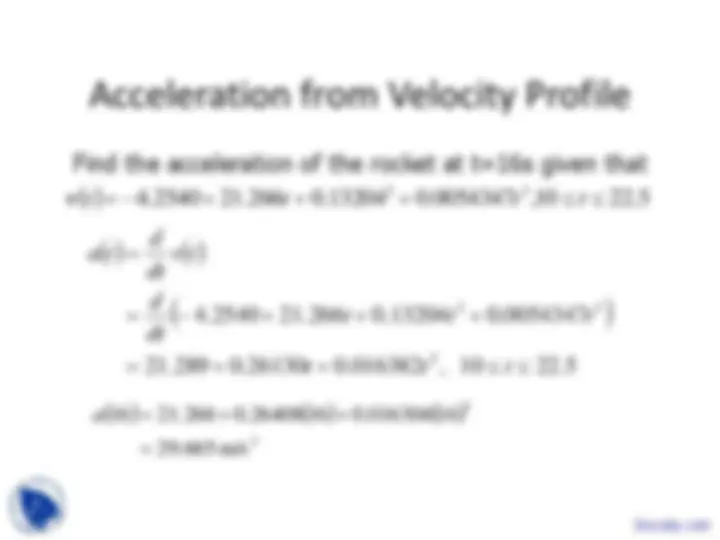


Study with the several resources on Docsity

Earn points by helping other students or get them with a premium plan


Prepare for your exams
Study with the several resources on Docsity

Earn points to download
Earn points by helping other students or get them with a premium plan
Community
Ask the community for help and clear up your study doubts
Discover the best universities in your country according to Docsity users
Free resources
Download our free guides on studying techniques, anxiety management strategies, and thesis advice from Docsity tutors
Main points are: Direct Method of Interpolation, Interpolation of Discrete, Polynomial of Order, Data Points, Linear Interpolation, Upward Velocity, Function of Time, Quadratic Interpolation, Relative Approximate Error
Typology: Slides
1 / 15

This page cannot be seen from the preview
Don't miss anything!










Figure 1 Interpolation of discrete.
0 1
n n
The upward velocity of a rocket is given as a function of time in Table 1.
Find the velocity at t=16 seconds using the direct method for linear interpolation.
0 0
10 227.
15 362.
20 517.
22.5 602.
30 901.
Table 1 Velocity as a function
of time.
Figure 2 Velocity vs. time data for the rocket example
t , s v t , m/s
The upward velocity of a rocket is given as a function of time in Table 2.
Find the velocity at t=16 seconds using the direct method for quadratic interpolation.
0 0
10 227.
15 362.
20 517.
22.5 602.
30 901.
Table 2 Velocity as a function
of time.
Figure 5 Velocity vs. time data for the rocket example
t , s v t , m/s
2 v t a 0 a 1 t a 2 t
2 v a 0 a 1 a 2
2 v a 0 a 1 a 2
2 v a 0 a 1 a 2
0
1
2
(^) x 0 , y 0
x 1 , y 1 x 2 , y 2
f 2 x
y
x Figure 6 Quadratic interpolation.
The upward velocity of a rocket is given as a function of time in Table 3.
Find the velocity at t=16 seconds using the direct method for cubic interpolation.
0 0
10 227.
15 362.
20 517.
22.5 602.
30 901.
Table 3 Velocity as a function
of time.
Figure 6 Velocity vs. time data for the rocket example
t , s v t , m/s
v t^ a 0 a 1 t a 2 t^2 a 3 t^3
3 3
2 v 10 227. 04 a 0 a 110 a 210 a 10
3 3
2 v 15 362. 78 a 0 a 115 a 2 15 a 15
3 3
2 v 20 517. 35 a 0 a 1 20 a 2 20 a 20
3 3
2 v 22. 5 602. 97 a 0 a 1 22. 5 a 2 22. 5 a 22. 5
a 0 4. 2540 a 1 21. 266 a 2 ^0.^13204 a 3 ^0.^0054347
y
x
f 3 x
x 3 , y 3
(^) x 2 , y 2
(^) x 1 , y 1
x 0 , y 0
Figure 7 Cubic interpolation.
Order of Polynomial
1 2 3
v t 16 m/s 393.7 392.19 392.
Absolute Relative Approximate Error
---------- 0.38 410 % 0.033269 %
Table 4 Comparison of different orders of the polynomial.
Find the distance covered by the rocket from t=11s to t=16s?
2 3 v t t t t t
1605 m
4
0054347 3
13204 2
2540 21. 266
2540 21. 266 0. 13204 0. 0054347
16 11
16
11
2 3 4
16
11
2 3
16
11
t t t t
t t t dt
s s v t dt